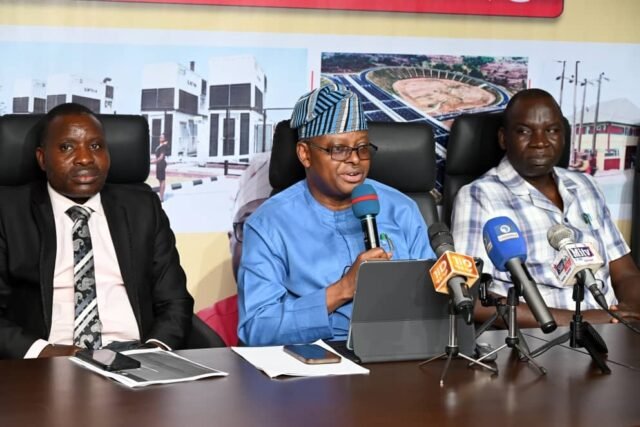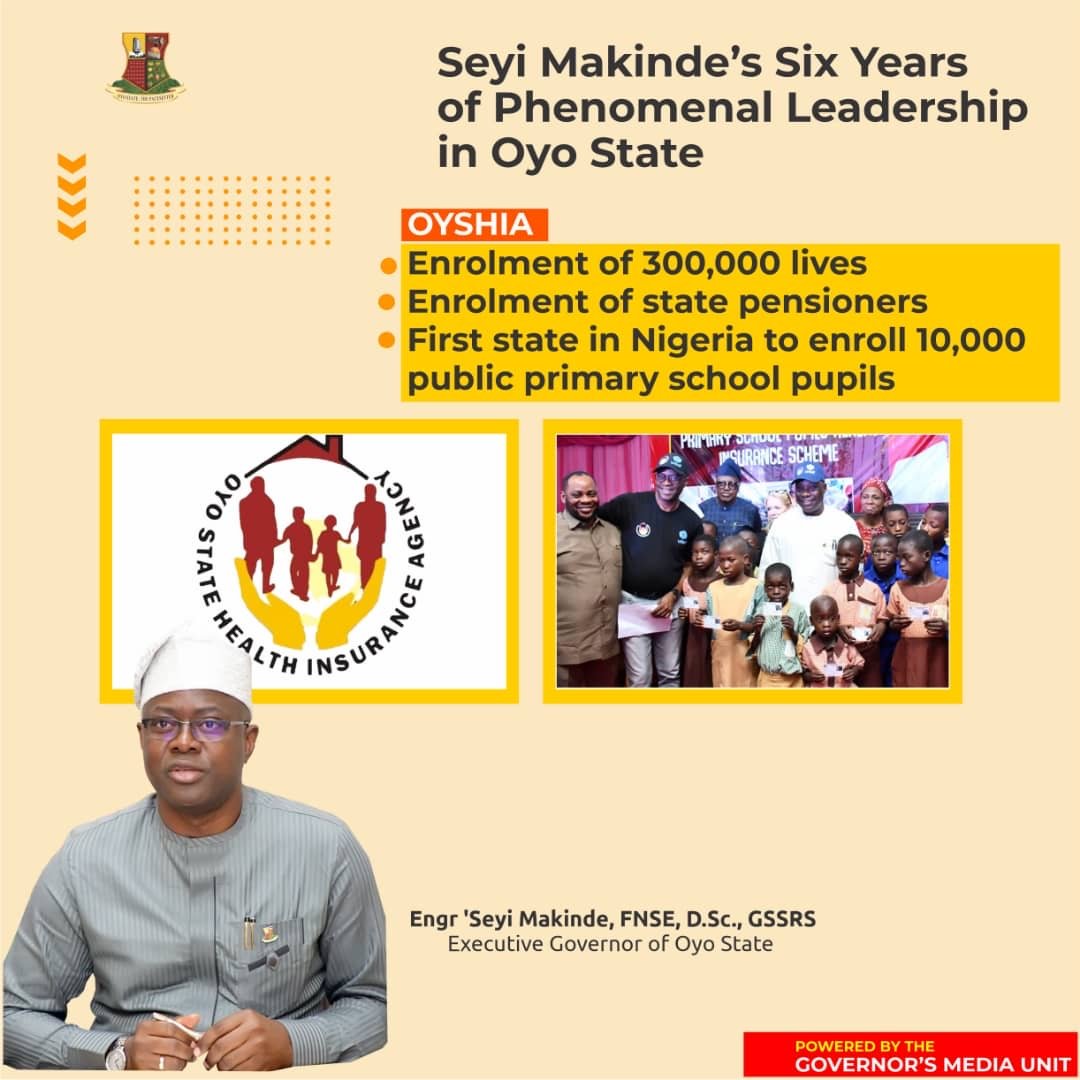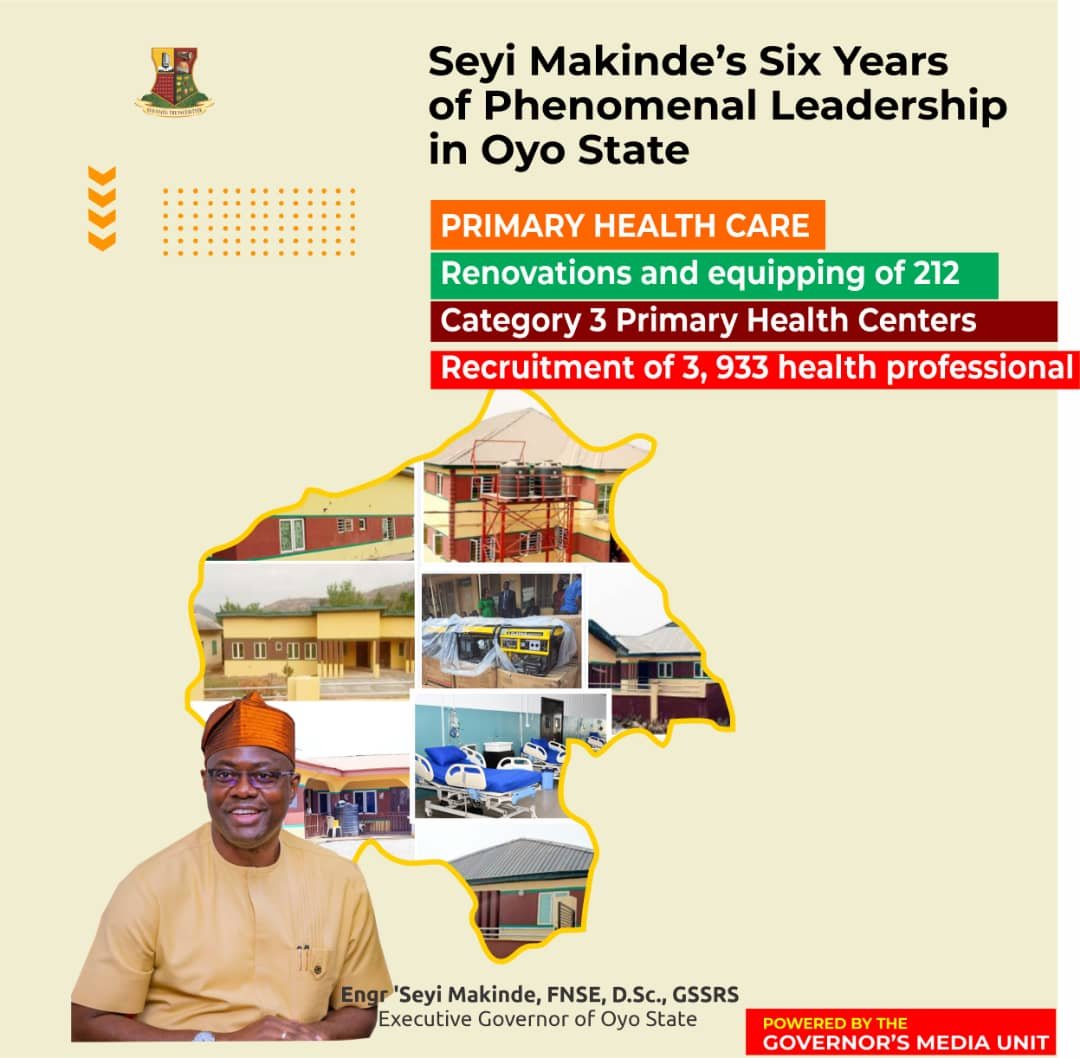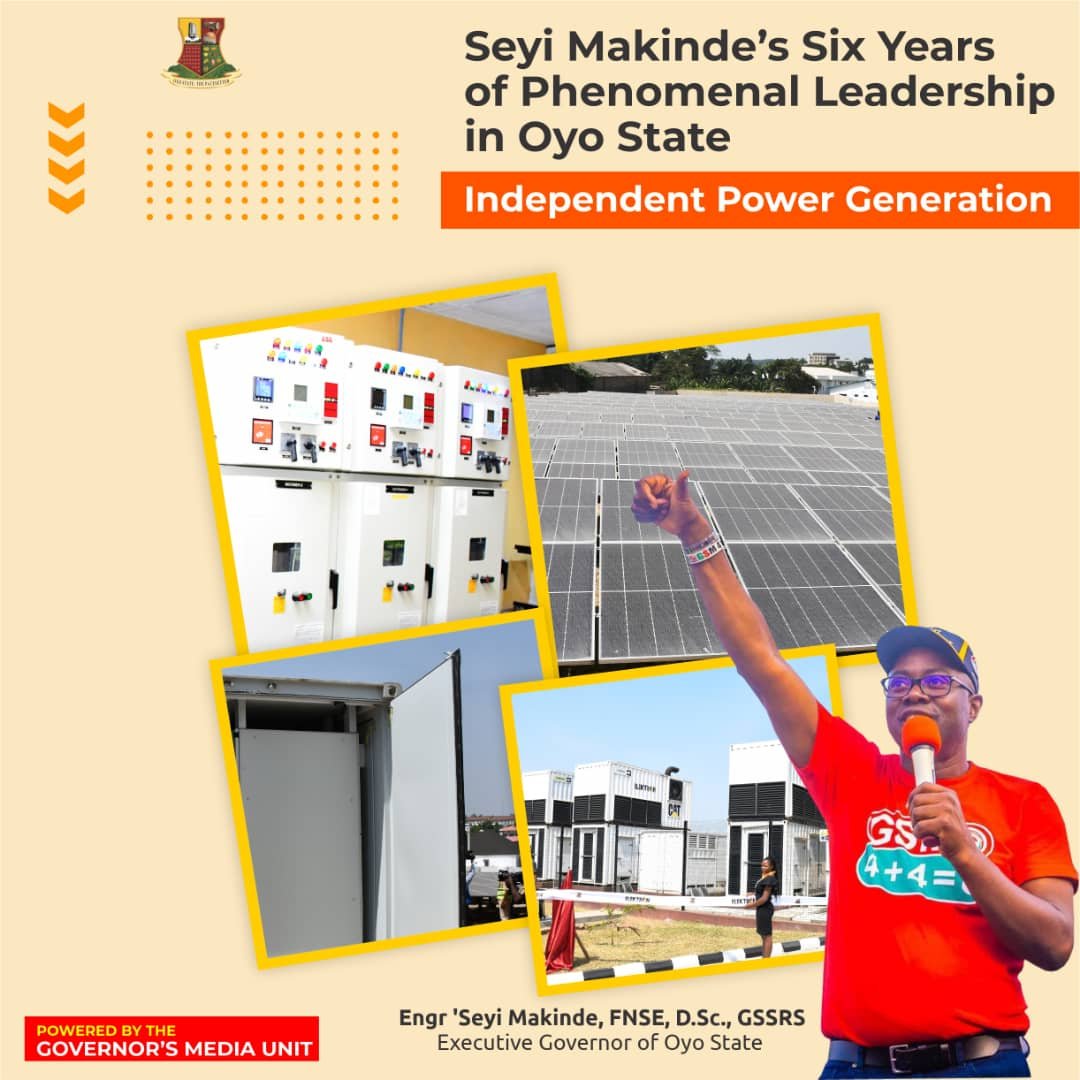By Adeyinka Adeniran
The Commissioner for Energy and Mineral Resources, Professor Dahud Shangodoyin, has explained that the policies of Governor ‘Seyi Makinde in the energy sector have combined to transform the night economy and security of the state in the last few years.
Shangodoyin maintained that through the Oyo State Electricity Regulation Law, the Light-up Oyo Project, the SMART LED Solar Street Light project, the Hybrid Independent Power Project and the provision of mini grids across the state, the Makinde administration has addressed poverty, insecurity and impacted on residents of the state.
He spoke on Wednesday, at the Omituntun 2.0 Inter-Ministerial Press Briefing held at the Governor’s Office Briefing Room, Secretariat, Ibadan.
According to him, the Ministry focused on institutional reforms and governance; promotion of private-public partnership; developing robust revenue models and developing policies for sustainable energy, which have all resulted in the reduction of energy deficit in the state.
This was as the Commissioner declared that the proposed Ibadan Gas Distribution Project is well on course, noting that following the signing of a Memorandum of Understanding between the Oyo State Government and the Shell Nigeria Gas, the state has approached the Nigeria Mainstream Downstream Petroleum Regulatory Authority for the licence for the project.
He noted that once the state is able to secure the licence, it will move to complete the project, which will further address energy deficit in the state.
Shangodoyin maintained that Governor Makinde’s dream is to ensure that the state achieves 500 megawatts of energy generation before leaving office, noting that the administration has been doing everything possible including putting in place the legal frameworks, policies and infrastructure to achieve the focus.
He stated that his Ministry’s impact on the energy sector is captured through the Light-up Oyo Project, which second phase covering 223.48km, has been executed up to 75 per cent; the provision of mini grids to scores of rural communities across the state and the construction of the first phase of the Hybrid Independent Power Project, which has helped in fully powering the Secretariat.
Other achievements, he noted, include the supply of solar power to about 21 PHCs and provisions and installations of transformers in many communities across the state, among others.
He said: “We are here to share with you the impact of the Ministry of Energy and Mineral Resources in the administration of Governor ‘Seyi Makinde in the last two years.
“The Ministry was set up in 2019 and the goals were to ensure that we have energy security in Oyo State and to reduce energy poverty across the state. Also, part of the goals is to make Oyo State a destination for energy investment.
“The Energy Ministry was built to pursue objectives that align with about five Sustainable Development Goals; SDG One, to reduce poverty; SDG Seven, which is the affordable clean energy; SDG Eight, decent work and economic growth; SDG Nine, industry, innovation and infrastructure and SDG Eleven, sustainable cities and communities.
“Apart from supporting these SDGs, we are focusing on ease of doing business in Oyo State, infrastructure development and development resource flow.
“All our activities directly support the economy of Oyo State as captured in Governor Makinde’s infrastructure revolution and contained in the Oyo State Roadmap for Accelerated Development, 2019-2023 and Oyo State Roadmap for Sustainable Development, 2023-2027. So, we can say that we are a big part of a bigger picture.
“Our strategies to achieve these goals have been enormous; we have what we call institutional reforms and governance; promotion of private-public partnership; developing robust revenue models and developing policies for sustainable energy.
“The state government completed the first phase of the Independent Power Project in December 2024 and it is generating 5 megawatts of power, while the phase will generate 6 megawatts. We have got it right in the last six months in that the four megawatts of Gas Generator has been sustained in the afternoons, and we are getting 2.4-2.8 MW for the Secretariat Complex, while in the evening we use 1 MW of Solar to power the energy within the Secretariat.
“We have sustained this with the assistance of the governor and we are also working with Elektron, the contractor, to make sure we can also distribute parts of the power to the suburbs of the Secretariat. We will optimise the use of the power generated. We are working towards optimising the first phase, while also working towards completing the second phase. We also supplied 21 Health Care Centres with solar power.
“The second one is the Light-up Oyo Project. About 18 kilometres were completed under Omituntun 1.0, while the phase 2 is 223.48km. We have installed the poles but we have outstanding ones in some towns and we are working towards completing them soon. We are managing the Light-up Oyo Project as a direct intervention of the Ministry in the last six months.
“We have sustained the priority areas within Ibadan; if you move from Ojoo to Dugbe, from Dugbe to Molete, from Yemetu to Beere to Challenge, from Molete to Akobo, you will find out that all the lights are on. The other areas, we are looking at how we can maintain them but we have to first get things right.
“Under phase 2, we have completed 75 per cent of the project. We need to emphasise that we are using the Trybrid approach to sustain the Light-up Project; gas, generator and electricity from IBEDC.
“We have the mini grid projects; we have completed one at Ajia in Ona Ara Local Government, which has 100 Kilowatts of power; we have completed the project in Otefon in Atiba Local Government; we have also completed one in Agbaruru in Iwajowa Local Government.
“We also have a PPP arrangement to power some communities across the state; three communities have been powered in Iwajowa Local Government using the solar minigrid; seven communities in Oriire Local Government; two communities in Itesiwaju, 2 communities in Saki West, one community in Surulere.
“The completion of the mini grids is a testament to the promise by Governor Makinde that we will provide valuable electricity to our rural communities.
“We have also provided transformers and installed the same to many communities, this is an ongoing exercise; New Bodija Estate Area, Aremo, Ilora Farm Settlement, Akobo, Air Force High School. This is to improve energy reliability. We will continue in this regard. What we are focusing on is to look at communities across the state and see where we can assist with regards to provision of transformers.
“We have the solar LED public lighting project. What we have done is to have a multi-approach to lighting our streets; some areas are solar-powered. The Exco approved 85km of solar street lighting across the state and we have achieved 43.12 km of this project within Ibadan. We are extending the rest to other zones in the state so that we build Smart LED solar lighting on streets to improve public lighting, energy efficiency and improved evening/night economy.
“We are providing the first of its kind high flood light in the South-West. On Bridge 1 of the Senator Rashidi Ladoja Circular Road, we have energised a 30-metre tall high flood light having 18 masts with bulbs. That is the first of its kind and my colleagues from neighbouring states have asked me how we did it. We will complete that of Bridge 1 by next week, while another one will be completed at Bridge 6 around the Badeku Area.
“When you get to Onipepeye, you will find a high mast there coming from the Mufu Laninhun Area towards Access Christ Ministry, we have six masts there. That will improve the night economy in all those areas.
“We have powered and energised our highways through the Light-up Oyo Project and solar street lighting project. We have about 1300 all-in-one solar street lights across 50 markets, motor parks, hospitals and other places. We have also supplied electricity to health facilities, using the off-grid approach.”
The Commissioner further noted that in line with the Legacy Compact recently launched by the state government to measure performance and come up with legacy deliverables in the next few months, his Ministry has identified priority areas, including removing investment bottlenecks in the energy sector, addressing technical deficits and sustaining efforts aimed at getting competent hands to help with operation and maintenance.
“We will also identify institutional gaps in terms of weak inter-agency coordination, rural electrification, donor engagement and energy security. We will continue to key into the vision of the governor to make Oyo State functional, economically vibrant, socially harmonious, aesthetically delightful and a preferred destination for all,” he concluded.












